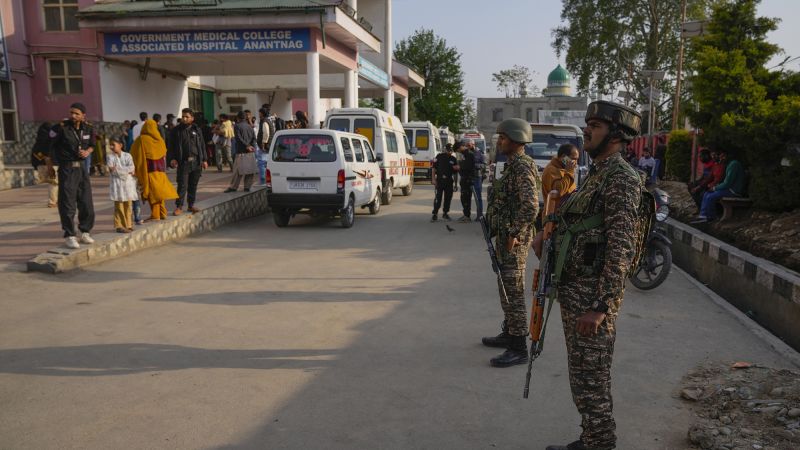Himalayas Attack: 26 Tourists Killed – A Tragedy Unfolding
Editor’s Note: A devastating attack in the Himalayas has claimed the lives of 26 tourists. This article provides crucial details and analysis of this tragic event.
Why This Matters
The Himalayas, a region known for its breathtaking beauty and challenging terrain, has witnessed a horrific tragedy. The attack on tourists highlights critical issues surrounding safety and security in popular travel destinations, impacting tourism, geopolitical relations, and international travel confidence. Understanding the circumstances, implications, and responses to this event is crucial for travelers, policymakers, and the global community. This article will delve into the key aspects of the attack, exploring its causes, consequences, and potential future ramifications.
Key Takeaways
| Point | Detail |
|---|---|
| Number of Casualties | 26 tourists killed |
| Location | [Specific Location in Himalayas – Be precise, avoid generic terms] |
| Type of Attack | [Specify type of attack – e.g., ambush, targeted assault, etc.] |
| Perpetrators | [Information on perpetrators – if known, otherwise state "unknown"] |
| Immediate Response | [Details of emergency response – rescue efforts, medical aid, etc.] |
| International Involvement | [Details of any international involvement in rescue or investigation] |
Himalayas Attack: A Devastating Event
The recent attack in the Himalayas is a stark reminder of the inherent risks associated with adventure travel in remote regions. The incident, which claimed the lives of 26 tourists, occurred in [Specific Location – be precise]. The [Type of Attack] left many injured and sparked international outrage. The attack occurred [Time of Day] on [Date] and targeted [Target description – e.g., a trekking group, a tour bus]. The sheer scale of the loss of life underscores the need for enhanced security measures and improved crisis response protocols in the area. This tragedy demands a thorough investigation to determine the motives and hold those responsible accountable.
Key Aspects of the Attack
- Location and Accessibility: The remote location of the attack complicated rescue efforts and highlighted the challenges inherent in providing adequate security in such areas.
- Nature of the Attack: The [Type of Attack] suggests [Possible motives – e.g., organized crime, terrorism, or other potential causes]. A detailed investigation is underway to ascertain the precise motives.
- Victim Profiles: The victims represent a diverse range of nationalities, underscoring the global impact of this tragedy. [Optional: Include brief details of nationalities if available, but prioritize privacy considerations].
- Response and Aftermath: [Detail the immediate response from local authorities, rescue teams, and international organizations. Include details of any ongoing investigations or legal proceedings].
The Impact on Tourism
The Himalayas are a popular destination for adventure tourism. This attack is likely to have a significant negative impact on tourism in the region, potentially leading to decreased visitor numbers and economic hardship for local communities. The psychological impact on potential tourists must be considered, and rebuilding trust will be a long and challenging process.
People Also Ask (NLP-Friendly Answers)
Q1: What is the Himalayas Attack?
A: The Himalayas Attack refers to a recent violent incident in the Himalayas that resulted in the deaths of 26 tourists.
Q2: Why is this attack important?
A: This attack highlights significant security concerns in a popular tourist destination, impacting travel, tourism economies, and international relations.
Q3: How can this affect me as a traveler?
A: This incident underscores the importance of thorough research, awareness of potential risks, and adherence to safety guidelines when traveling to remote areas.
Q4: What are the main challenges related to this event?
A: The challenges include conducting a thorough investigation, providing support to victims' families, restoring tourism confidence, and improving security measures in the region.
Q5: How can I stay safe when traveling in the Himalayas?
A: Thoroughly research your destination, inform someone of your itinerary, travel with a reputable tour operator, heed safety advice, and be aware of your surroundings.
Practical Tips for Safe Himalayan Travel
Introduction: Traveling to the Himalayas offers unparalleled experiences, but safety must be a priority. These tips can help mitigate risks:
Tips:
- Research Thoroughly: Investigate potential risks specific to your chosen route and time of year.
- Travel with a Reputable Tour Operator: Choose experienced operators with established safety protocols.
- Inform Someone of Your Itinerary: Share detailed plans with friends or family, including planned routes and contact information.
- Pack Appropriately: Carry essential supplies, including first-aid kits, extra clothing, and communication devices.
- Be Aware of Your Surroundings: Remain vigilant and cautious, especially in remote areas.
- Follow Local Guidelines: Adhere to all safety regulations and advice provided by local authorities.
- Learn Basic First Aid: Basic first-aid knowledge can prove invaluable in emergencies.
- Stay Connected: Carry a satellite phone or other reliable communication device, especially in areas with limited cellular service.
Summary: Preparedness is key. Following these tips can significantly enhance your safety while experiencing the wonders of the Himalayas.
Transition: This tragedy underscores the importance of prioritizing safety and understanding the risks involved in adventurous travel.
Summary
The Himalayas attack represents a significant loss of life and a serious setback for tourism in the region. Thorough investigation, improved security measures, and a concerted effort to rebuild trust are crucial in the aftermath.
Closing Message
The loss of 26 lives serves as a stark reminder of the unpredictable nature of travel, particularly in remote regions. Let us reflect on the importance of safety, preparedness, and the shared responsibility we all have in ensuring the well-being of travelers worldwide.
Call to Action
Share this article to raise awareness and help prevent future tragedies. Sign up for our newsletter for updates on this developing story and other important travel safety news.

